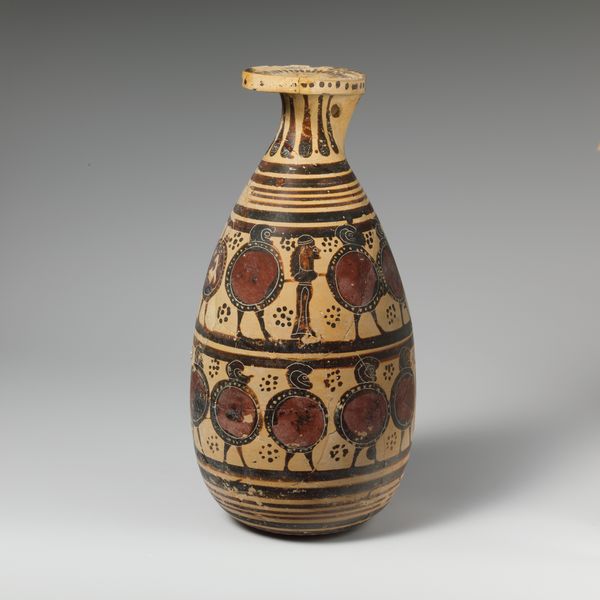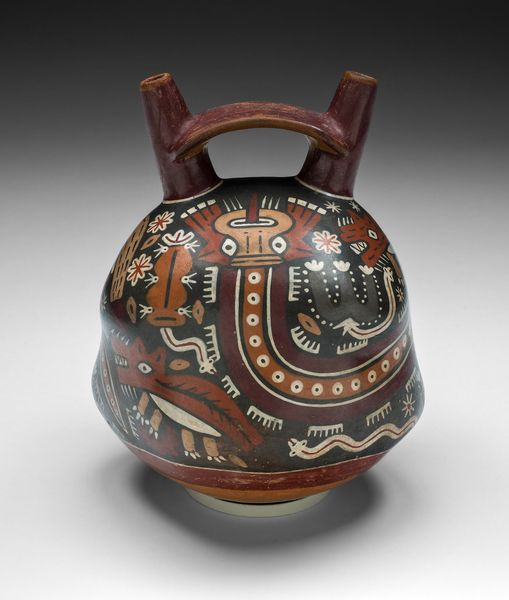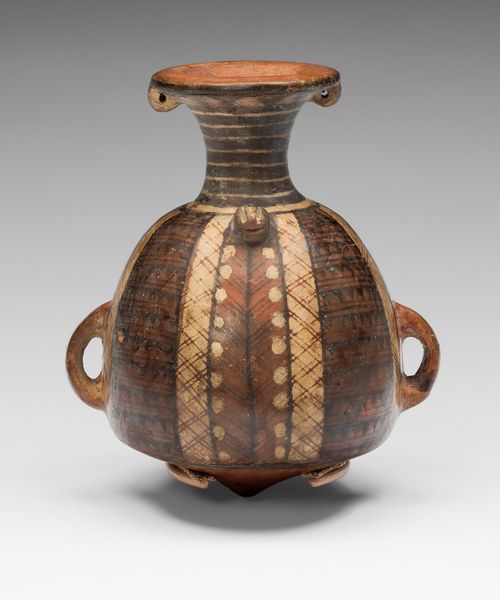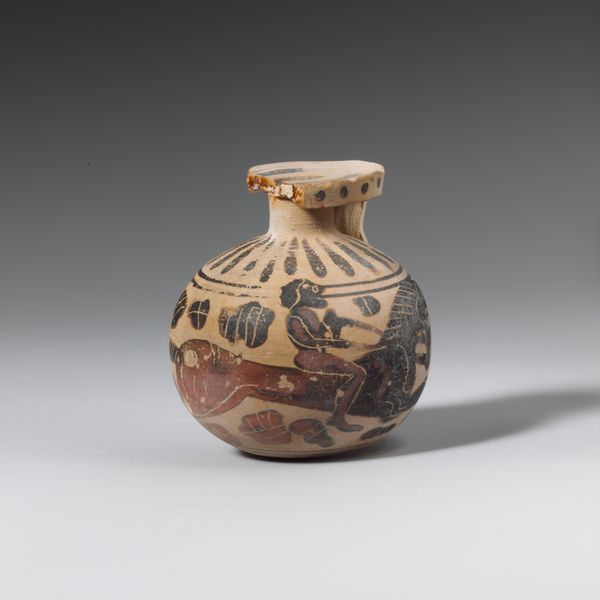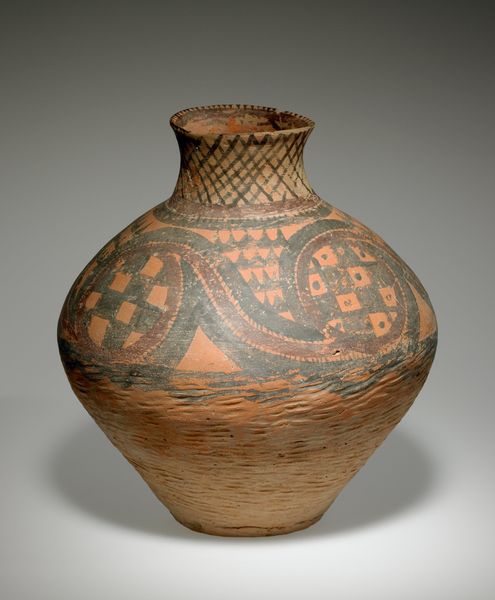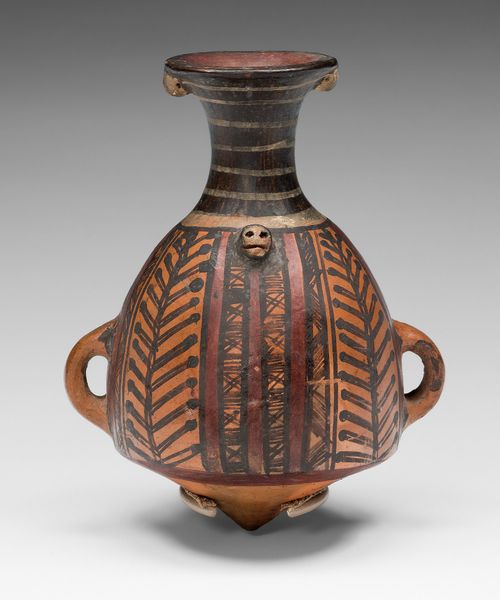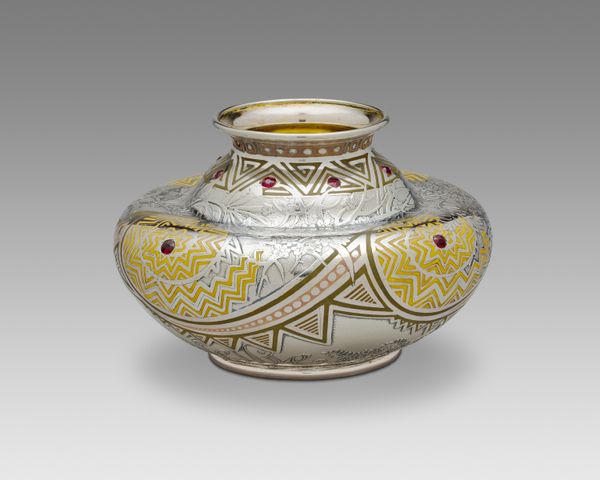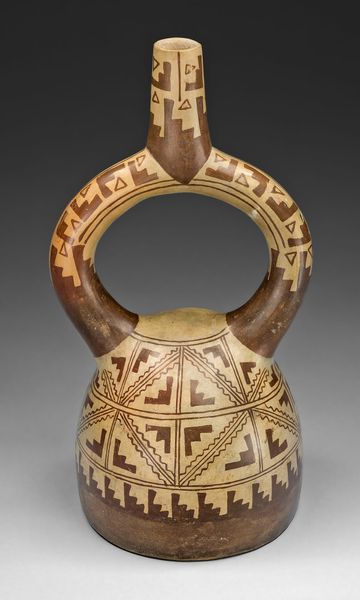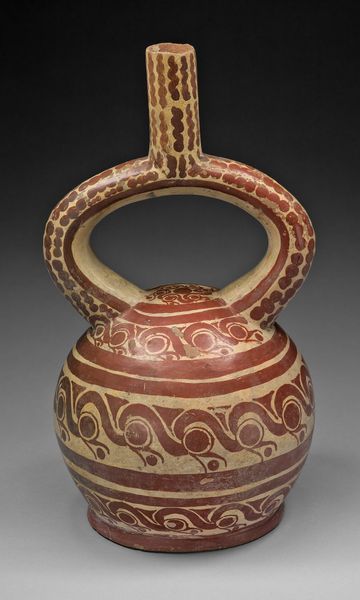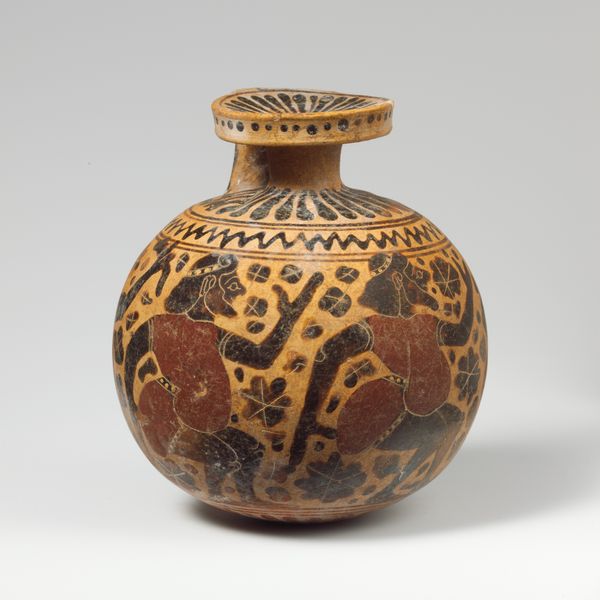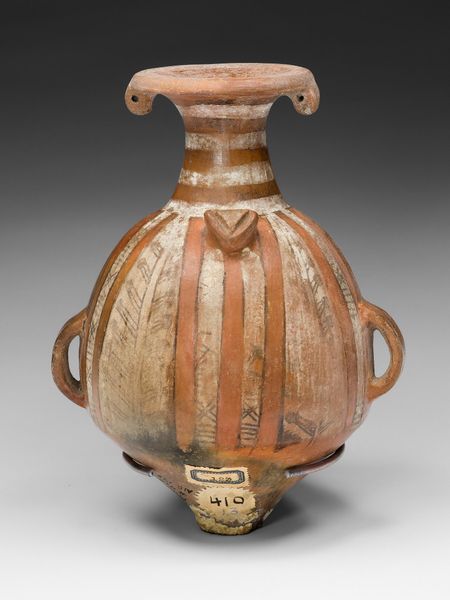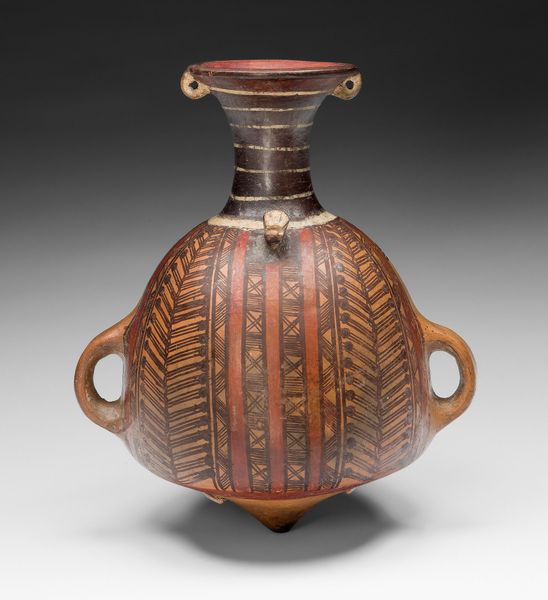
ceramic, terracotta
#
narrative-art
#
greek-and-roman-art
#
ceramic
#
vase
#
figuration
#
geometric
#
ancient-mediterranean
#
terracotta
Dimensions: H. 2 3/4 in. (7 cm)
Copyright: Public Domain
Editor: This is a terracotta aryballos, or perfume vase, created around 620 BC. It's currently held at the Metropolitan Museum of Art. Looking at it, I'm immediately struck by how dynamic and decorative it is despite its age. The animals circling the vase give it a sense of movement. What can you tell me about how vases such as this were regarded during their time? Curator: Ah, yes, an olfactory whisper from across the millennia. It's fascinating to imagine the precious, perfumed oil it once held, a scent so prized it warranted such artistry. Think of it less as a vase, more as a wearable status symbol, miniature billboard advertising one’s worldliness. This little sphere isn't just any vessel; it's a declaration! How do the visual motifs contribute to this sense? Editor: I suppose that the level of detail involved speaks to some degree of value that the piece itself had at the time. What are the animals represented on this aryballos, and why are they there? Curator: What animals do you see? Forget zoological accuracy! The artist is more interested in impact. Observe the composite creatures—part lion, perhaps a touch of dragon? They're apotropaic, designed to ward off evil. Notice how they rhythmically populate the band? A sort of pulsating shield! In this era, personal adornment wasn't simply about aesthetics; it's about beliefs and protection. Isn't it curious how beauty and fear were so entwined? Editor: That's incredible – the notion of using perfume and its container to fend off negativity… a beautifully scented shield. It changes the way I view ancient artistry; more symbolic than decorative, really. Curator: Precisely. Art then wasn't just pretty—it was potent, purposeful.
Comments
No comments
Be the first to comment and join the conversation on the ultimate creative platform.
